Is it nap time?
The bedroom can serve as a multifunctional room–such as an office, library, or laundry room–but in the end, it is a sanctuary for sleep. This room should be the most luxurious and personal space in any home – a soothing oasis that is conducive to relaxation and comfort. Here are some tips on how you can design your bedroom for better sleep, which should be considered along with color options, styles, and furniture.
A good mattress is the key to a good night’s rest.
A good night’s rest may be as simple as getting a new mattress. If your mattress is too lumpy, hard, or soft, it will keep you up all night trying to get comfortable. There are many different types of mattresses, such as pillow, foam, innerspring, adjustable, waterbeds, and airbeds; each type has manufacturers who guarantee comfort and better sleep.
When you shop for a mattress, follow these simple steps:
- Research extensively.
According to Consumer Reports, Casper and Tuft and Needle were rated the highest in overall satisfaction in a survey of almost 62,000 Consumer Reports subscribers.
- Test out your mattress.
If possible, lie on any mattress that you’re considering. Wear loose clothes and shoes you can slip off. Make yourself comfortable, and shoo away the salesperson if you’re feeling pressured. Salespeople should expect you to take your time. Spend at least five or ten minutes on each side and on your back (your stomach, too, if that’s a preferred sleeping position). Panelists who took beds home for a month-long trial rarely changed the opinion they formed after the first night.Shopping online or at a warehouse club? Tryouts aren’t usually an option, so checking return policies before you buy is extra important.
- Check Return Policies.
Make sure the store offers a full refund or credit toward another mattress. Return periods, often called “comfort guarantees,” range from a couple of weeks to 120 days. Some retailers, including Macy’s and Sears, charge a 15-percent restocking fee.Costco and some online sellers provide free pickup if you want a refund or exchange, but otherwise, you’ll have to pay for it—or cart the mattress to the store. And you’ll be responsible for any damage.
- Understand the Warranty
It can range from 10 to 25 years and covers only manufacturing defects such as sagging and loose or broken coil wires. Coverage is frequently prorated, meaning that it decreases over time.
- Try to Haggle
Once you’ve settled on a model, try to bring the price down. Many businesses, such as warehouse clubs, have fixed prices and won’t budge. But for retailers that do negotiate—particularly specialty chains—huge markups allow them to lower prices by 50 percent or more during their frequent sales.
- One recommendation:
Any time of year, insist on a sale price you’ve seen for the mattress you know you want, and don’t be afraid to walk out if you feel you’re getting a raw deal.
- Don’t Be Bullied Into Buying a Box Spring
You might not need it. For an innerspring mattress, the box spring (also called a “foundation”) is a wood frame enclosing stiff wire and covered with fabric to match the mattress. For foam or adjustable-air mattresses, it’s a box several inches high.
If you’re switching to a foam or adjustable-air bed from an innerspring, you’ll need a boxy foundation that lacks springs and wire. Otherwise, if your box spring isn’t broken and is still structurally sound, consider keeping it and saving money (roughly $150 to $300 for a queen-size).
- One caveat:
Some brands require you to buy their box spring to receive full warranty coverage.
- Forget About Comparison Shopping
If you like a mattress at one store and ask elsewhere for something similar, you’re likely to be steered toward a same-brand mattress claimed to have the same construction, components, and firmness. But they’re probably not the same. Mattress makers offer some lines nationally, but when those brands are sold through major chains such as Macy’s, Sears, and Sleepy’s, they’re for lines exclusive to those chains. And manufacturers don’t publish a directory of comparable mattresses.
- On Delivery Day
Never accept delivery without inspecting the mattress (and the box spring, if you buy one) for stains and other damage. Also be sure that the mattress has a label that states “all-new material” before you send the driver on his way. If it’s not there, refuse delivery. And keep it on afterward in case you do have to file a warranty claim in the future.
Clean It Up
Not in the market for a new mattress? Maybe it’s time to clean up the old one!
Tackling this five-step chore a couple times a year can help keep things fresh in the bedroom. From Consumer Reports, here’s a nice how-to:
You spend about a third of your life on your mattress. When was the last time you gave it a good, deep clean? The seldom-used living room sofa probably feels the bristle of a vacuum brush more often than your trusty mattress. It’s time to change that. Besides promoting a more pleasant and productive night’s sleep, a clean, cared for mattress can last longer—and it might even help prevent nasty, not to mention costly, pest infestations.
Back when most mattresses could be flipped over, the conventional wisdom was that you should turn it twice a year, and take that opportunity to clean it as well. These days, a lot of mattresses, including the pillow-top variety, can’t be turned because they have a proper top and bottom. But cleaning your mattress two times a year remains a good rule of thumb. (Check the mattress label for instructions since the manufacturer might recommend rotating the mattress head to foot to ensure even wear.)
- Step 1
Start the cleaning process by stripping the mattress of all sheets and bedding and tossing the items in the wash. To remove tough stains, always use a good laundry detergent and the hottest water setting on your washing machine; dry on high heat as well to zap any surviving critters.
- Step 2
Next, vacuum the entire mattress surface with the upholstery attachment on your vacuum cleaner. Pay attention to seams and crevices, where dirt, dust, dead skin, and other icky stuff collect; switching to your vacuum’s crevice attachment can help get in deep.
- Step 3
Once you’re finished vacuuming, check for stains and spot treat them with an appropriate cleaner. An upholstery cleaner or enzyme-based pet-odor remover can do the job on many bodily fluids. You can also try a simple solution of 1 teaspoon mild dish detergent and 1 cup of warm water.
Here’s a simple recipe for a mattress cleaner:
- Step 4
Next, deodorize the mattress by sprinkling baking soda over the entire surface. Especially if this is your first cleaning, don’t be afraid to empty an entire 1-pound box onto the mattress.
For best results, leave the baking soda there for 24 hours. That means you might need to plan the project around an overnight trip—or be willing to sleep elsewhere in your home. If you can place the mattress near a window, the sunlight will add its sanitizing power.
- Note:
In my own experience, I have found that Listerine (the original formula- not the mint) makes for a great deodorizer when it comes to urine (animal or human). Pour it, undiluted onto the area, really saturate it, and then allow it to dry completely.
- Step 5
After the baking soda has had a chance to tackle odors, go back over the mattress with your vacuum’s upholstery attachment. If you don’t already own a mattress cover, we recommend buying one. And adding a mattress pad between the cover and bottom sheet will help absorb moisture.
Along with the periodic deep cleaning described here, these extra layers of protection will help prevent mites, fleas, and other pests from sharing your bed. That should really help you sleep tight.
Recipe for a Mattress Spray with Essential Oils
A nice little refresher made with essential oils can also be spritzed onto the mattress.
Mix together the following:
- 3 drops Eucalyptus Oil
- 3 drops Lemon Oil
- 3 drops Lavender Oil
- 3 drops Tea Tree Oil
- 3 drops Peppermint Oil
- 1/2 bottle Witch Hazel
- 1/2 bottle Water
Pour into a spray bottle and apply to the mattress.
Another nice essential oil blend for your linens and mattress is Lemon Grass and Rosemary. You might also want to try a mix of cheap vodka, lemon, grapefruit, and bergamot essential oils for a citrus delight.
Sleeping In The Dark
One of the most important conditions needed for sound sleep is darkness.
According to Brandon Peters, M.D., who is trained in clinical sleep medicine and neurology at the University of Minnesota Medical Center in Minneapolis, our mind and body’s natural circadian rhythm lean towards following dark-light cycle.Therefore, the amount of light in your bedroom will affect your sleep.
Our modern lifestyles can disrupt us from dark, calm environments that our bodies need for sleep. These modern devices are digital clocks, televisions, phones, and computers, which can light up your bedroom and interrupt your REM (Rapid Eye Movement) sleep.
Some solutions you can use in your bedroom are armoires to hide televisions or computers, and vintage open-faced alarm clocks versus bright digital alarm clocks. Remove phones from your bedroom; if it’s important to have a phone in your bedroom, hide it away in a side table drawer.
If you work at night and sleep during the day, black out shades are a must! We saw some cool ones in yesterday’s post.
Hot or Cold?
Air temperature can affect your sleep.
If the room is too cold or warm, it too can affect how you sleep at night, according to Ralph Downey III, PhD, Chief of Sleep Medicine at Loma Linda University. A simple solution, which can be tested if you believe this is your issue, is altering your thermostat.
Other options you can incorporate in your bedroom to help with room temperature is a ceiling fan, portable heater, or heavy blinds and window treatments, which will help keep the room dark and prevent outside weather conditions from entering your bedroom.
Color and Sound
Soothing colors and soothing sounds make for a good night’s sleep.
Bright, vibrant colors can be fun, but sometimes it’s best not to use them within a bedroom, especially if you have trouble sleeping. Instead, use calm, soothing colors like muted blues, greens, and pastels, which are more peaceful and calm. If you still would like to incorporate bright colors in your bedroom, use them as accents on your pillows or within artwork.
Besides color, soothing sounds can promote sleep too, such as a babbling brook, soft wind chimes, or crickets’ chirping. You can incorporate these sounds in your room with a CD player or any other electronic device hidden away; if you prefer the real thing, then place a small fountain in your bedroom or hang some wind chimes outside your window.
Clutter Is A No-No
Too much clutter can cause anxiety and lack of sleep.
This is a feng shui no-no and good advice to bear, since too much clutter can cause anxiety and uneasiness in any room. Try to keep your bedroom in order so you’re not worried about tripping over stuff when you get up in the middle of the night or toss-and-turn about cleaning up before you go to sleep. There are several storage options you can use in your bedroom or closet that will tackle the clutter, which are appealing and affordable, too.
One or more of these design tips will help you maintain a sanctuary of sleep and rest in your bedroom. Next step to designing you bedroom is to determine your style, color scheme, and furniture.
Sleeping Under The Stars
How fun is this?
There are a number of different ways to get this effect. The simplest one is to use glow in the dark paint. For this project you would need the following:
- Flat black paint – for the background / ceiling
- Glow in the dark paint
- A jar of fine sparkly glitter – optional, but worth it because you’ll get the fun of the glitter all day long as well.
Paint the ceiling and/or walls. Mix the glow in the dark paint in small batches, adding enough glitter to thicken it. Paint on your stars. A template can be used, or the stars can be dabbed on with a paint brush. For larger stars, you may want to apply 2 coats of glitter and glow in the dark paint.
A simpler, less time consuming method is to buy glow in the dark stars decals and stickers. I found some cool ones at Etsy, and a wide variety of them on Amazon.
If you have skills… and money… you can invest in a super cool LED fiber optic ceiling.
It looked pretty complicated, so I’m just going to leave you with this collection of images that give an idea of what is involved:
Or you can just buy pre-made panels in a variety of starfield patterns and colors.
Great for a baby’s room! Really adds some nice soft lighting.
Sleep Like A Baby
Sound slumber results in increased energy and productivity, improved heart and immune system health, a better mood, even a longer life. And hey, you just feel so much better after a satisfying 8 hours of rest.
Sleep is a basic biological necessity—just like eating—and it has an impact on every aspect of your health and your life.
A good night’s rest starts with the right setting for your body and mind to relax and recharge. With a few simple changes to your bedroom, you can get a better night of sleep. Start the makeover from lighting to bedding today so you can sleep better tonight.
Here is a collection of tips and suggestions on how to get a good night’s sleep.
- Make Your Bed
This simple morning chore pays off. A clean, well-kept bed can have a psychological effect on the way you sleep. A National Sleep Foundation poll found that people who made their beds in the morning were 19% more likely to sleep well every night.
- Banish Chaos
Your super-long day is finally over, and then you walk into your bedroom. What’s your gut reaction: “Ah, at last!” or “Oh no!”
A messy bedroom makes some people feel stressed. So try to keep your bedroom orderly and neat so you can relax more at night.
Likewise, your bedroom isn’t the place to multitask. You want a calm atmosphere in your bedroom that makes rest irresistible. Work, read, pay bills, and do other tasks in another room. Remove distractions, such as a TV, so you’re not tempted.
- Hey, That’s My Blanket!
You might want to rethink the way you and your partner make the bed. If you each have your own blanket and top sheet, you can each make yourself comfy and avoid fights over the covers. You’ll both be free to move around and stay as warm (or cool) as you like.
- Build Your Bedding
Sheets, comforters, and your mattress can all affect the way you sleep. Be choosy when you shop.
A breathable fabric like cotton for sheets can help you stay cool through the night. Other fabrics can wick away sweat during warmer seasons. You may also want to have a thinner comforter when the seasons heat up and a thick and toasty one for winter.
Your mattress should support you and feel good. The same is true for pillows. Replace them when they become lumpy or lose their original shape.
- Seal Your Mattress
Sneezes, sniffles, and itchiness from allergies can lead to lousy shut-eye. Your mattress may hold the cause. Over time, it can fill with mold, dust mite droppings, and other allergy triggers. Seal your mattress, box springs, and pillows to avoid them. Air-tight, plastic, dust-proof covers work best.
- Power Down
Dim those lights! And not just the lamp on your bedside table. “Light is a powerful signal to your brain to be awake,” explains Dr. Shives. Even the glow from your laptop, iPad, smart phone, or any other electronics on your nightstand may pass through your closed eyelids and retinas into your hypothalamus—the part of your brain that controls sleep. This delays your brain’s release of the sleep-promoting hormone melatonin. Thus, the darker your room is, the more soundly you’ll sleep.
Power your devices down when you turn in. Or if you just can’t switch off your phone, put it in a drawer so its glow won’t keep you up. Turn off TVs, computers, and other blue-light sources an hour before you go to bed. Cover any displays you can’t shut off.
- Hush Noise
Faucet drips, nearby traffic, or a loud dog can chip away at your sleep. And if you’re a parent, you might be all too aware of noises at night long after your children have outgrown their cribs. Use a fan, an air conditioner, or a white noise app or machine. You can also try ear plugs.
- Set Your Body Clock
Go to sleep and wake up at roughly the same time every day, even on weekends. This routine will get your brain and body used to being on a healthy snooze-wake schedule. In time, you’ll be able to nod off quickly and rest soundly through the night.
A regular sleep routine keeps your biological clock steady so you rest better. Exposure to a regular pattern of light and dark helps, so stay in sync by opening the blinds or going outside right after you wake up. Get out in bright light for 5 to 30 minutes as soon as you get out of bed. Light tells your body to get going!
Melatonin is a supplement that helps to set your body clock. Take the recommended amount about a half an hour before your preferred bedtime, and continue with this practice for a week or two, or until your body rhythms are in sync.
- Nix Naps
You’ll rest better at night. But if you have to snooze while the sun’s up, keep it to 20 minutes or less. Nap in the early part of the day. You can overcome an afternoon energy slump with a short walk, a glass of ice water, or a phone call with a friend.
- Cut caffeine after noon
Coffee in the morning is fine for most people. But as soon as the clock strikes noon, avoid caffeine in foods and drinks. That means coffee, tea, and cola. Caffeine is a stimulant that stays in your system for about 8 hours, so if you have a cappuccino after dinner, come bedtime, it’ll either prevent your brain from entering deep sleep or stop you from falling asleep altogether.
Even small amounts found in chocolate can affect your ZZZs later that night. Read labels. Some pain relievers and weight loss pills contain caffeine.
- Review your medications
Beta-blockers (prescribed for high blood pressure) may cause insomnia; so can SSRIs (a class of antidepressants that includes Prozac and Zoloft). And that’s just the beginning. Write down every drug and supplement you take, and have your doctor evaluate how they may be affecting your sleep.
- Eat Right at Night
Don’t eat heavy foods and big meals too late. They overload your digestive system, which affects how well you sleep. Have a light evening snack of cereal with milk or crackers and cheese instead. Finish eating at least an hour before bed.
Good snack choices
- 1 piece of whole grain toast with a slice of low-fat cheese or turkey
- Banana with 1 teaspoon of peanut butter
- Whole grain cereal and fat-free milk
- Fruit and low-fat yogurt
The ideal nighttime nosh combines carbohydrates and either calcium or a protein that contains the amino acid tryptophan—studies show that both of these combos boost serotonin, a naturally occurring brain chemical that helps you feel calm. Enjoy your snack about an hour before bedtime so that the amino acids have time to reach your brain.
Avoid sugar as it is stimulating and can exacerbate acid reflux and heartburn issues.
- Rethink Your Drink
Alcohol can make you sleepy at bedtime, but beware. A few hours after drinking, alcohol levels in your blood start to drop, which signals your body to wake up. It takes an average person about an hour to metabolize one drink, so if you have two glasses of wine with dinner, finish your last sip at least 2 hours before bed.
After its initial effects wear off, it will make you wake up more often overnight. Warm milk and chamomile tea are better choices.
- Stop Smoking
Nicotine is a stimulant, just like caffeine. Tobacco can keep you from falling asleep and make insomnia worse. Plus, many smokers experience withdrawal pangs at night. Smokers are 4 times more likely not to feel as well rested after a night’s sleep than nonsmokers, studies show, and smoking exacerbates sleep apnea and other breathing disorders, which can also stop you from getting a good night’s rest.
Don’t worry that quitting will keep you up nights too: That effect passes in about 3 nights, says Lisa Shives, MD, sleep expert and founder of Northshore Sleep Medicine.
- Watch What Time You Sip
Want to lower your odds of needing nighttime trips to the bathroom? Don’t drink anything in the last 2 hours before bed. If you have to get up at night, it can be hard to get back to sleep quickly. Keep a nightlight in the bathroom to minimize bright light.
- Work Out Wisely
Working out—especially cardio—improves the length and quality of your sleep. That said, 30 minutes of vigorous aerobic exercise keeps your body temperature elevated for about 4 hours, inhibiting sleep. A post-workout burst of energy can keep you awake. Aim to finish any vigorous exercise 3 to 4 hours before you head to bed.
Gentle mind-body exercises, like yoga or tai chi, are fine to do just before you hit the sack.
When your body begins to cool down, it signals your brain to release sleep-inducing melatonin, so then you’ll get drowsy.
Take time to wind down
“Sleep is not an on-off switch,” says Dr. Breus. “It’s more like slowly easing your foot off the gas.” Give your body time to transition from your active day to bedtime drowsiness by setting a timer for an hour before bed and divvying up the time as follows:
- First 20 minutes: Prep for tomorrow (pack your bag, set out your clothes).
- Next 20: Take care of personal hygiene (brush your teeth, moisturize your face).
- Last 20: Relax in bed, reading with a small, low-wattage book light or practicing deep breathing.
- Lower the Lights
Dim them around your home 2 to 3 hours before bedtime. Lower light levels signal your brain to make melatonin, the hormone that brings on sleep. Use a 15-watt bulb if you read in the last hour before bed.
- Free Your Mind
Put aside any work, touchy discussions, or complicated decisions 2 to 3 hours before bed. It takes time to turn off the “noise” of the day. If you’ve still got a lot on your mind, jot it down and let go for the night. Then, about an hour before you hit the sack, read something calming, meditate, listen to quiet music, or take a warm bath.
- Write down your woes
“The number one sleep complaint I hear? ‘I can’t turn off my mind,’ ” says Dr. Breus. To quiet that wakeful worrying, every night jot down your top concerns—say, I have to call my insurer to dispute that denied claim, which will take forever, and how can I spend all that time on the phone when work is so busy? Then write down the steps you can take to solve the problem—I’m going to look up the numbers before breakfast, refuse to stay on hold for more than three minutes, and send e-mails tomorrow night if I can’t get through—or even I can’t do anything about this tonight, so I’ll worry about it tomorrow. Once your concerns are converted into some kind of action plan, you’ll rest easier.
- Listen to a bedtime story
Load a familiar audiobook on your iPod—one that you know well, so it doesn’t engage you but distracts your attention until you drift off to sleep. Relaxing music works well, too.
- Stay cool…
Experts usually recommend setting your bedroom thermostat between 65° and 75°F—a good guideline, but pay attention to how you actually feel under the covers. Slipping between cool sheets helps trigger a drop in your body temperature. That shift signals the body to produce melatonin, which induces sleep.
That’s why it’s also a good idea to take a warm bath or hot shower before going to bed: Both temporarily raise your body temperature, after which it gradually lowers in the cooler air, cueing your body to feel sleepy. But for optimal rest, once you’ve settled in to bed, you shouldn’t feel cold or hot—but just right.
Try to keep your bedroom around 65 F. Everyone has their own ideal climate, so there is no right or wrong temperature. But avoid extremes in hot or cold because that might interfere with your rest.
Before you leave home, close the blinds or curtains in your bedroom to block the sun and keep the space cool. A couple of hours before you turn in, open a window to allow cool air to cycle through. Or use fans to push the warm air out.
- Spray a sleep-inducing scent
Certain smells, such as lavender, chamomile, and ylang-ylang, activate the alpha wave activity in the back of your brain, which leads to relaxation and helps you sleep more soundly. Mix a few drops of essential oil and water in a spray bottle and give your pillowcase a spritz.
- Breathe deeply
This technique helps reduce your heart rate and blood pressure, releases endorphins, and relaxes your body, priming you for sleep. Inhale for 5 seconds, pause for 3, then exhale to a count of 5. Start with 8 repetitions; gradually increase to 15.
To see if you’re doing it right, buy a bottle of children’s bubbles, breathe in through your belly, and blow through the wand. The smooth and steady breath that you use to blow a bubble successfully should be what you strive for when you’re trying to get to sleep.
- Put Your Neck in ‘Neutral’
Blame your pillow if you wake up tired with a stiff neck. It should be just the right size — not too fat and not too flat — to support the natural curve of your neck when you’re resting on your back. Do you sleep on your side? Line your nose up with the center of your body. Don’t snooze on your stomach. It twists your neck.
Use good posture before bed, too. Don’t crane your neck to watch TV.
- Check your pillow position
The perfect prop for your head will keep your spine and neck in a straight line to avoid tension or cramps that can prevent you from falling asleep. Ask your spouse to check the alignment of your head and neck when you’re in your starting sleep position.
If your neck is flexed back or raised, get a pillow that lets you sleep in a better-aligned position. And if you’re a stomach sleeper, consider using either no pillow or a very flat one to help keep your neck and spine straight.
- Try a Leg Pillow for Back Pain
Your lower back may not hurt enough to wake you up, but mild pain can disturb the deep, restful stages of sleep. Put a pillow between your legs to align your hips better and stress your lower back less.
Do you sleep on your back? Tuck a pillow under your knees to ease pain.
- Block Your Clock
Do you glance at it several times a night? That can make your mind race with thoughts about the day to come, which can keep you awake. Put your alarm clock in a drawer, under your bed, or turn it away from view.
- Stay put if you wake up
“The textbook advice is that if you can’t fall back asleep in fifteen minutes, get out of bed,” says Dr. Shives. “But I ask my patients, ‘How do you feel in bed?’ If they’re not fretting or anxious, I tell them to stay there, in the dark, and do some deep breathing or visualization.”
But if lying in bed pushes your stress buttons, get up and do something quiet and relaxing (in dim light), such as gentle yoga or massaging your feet until you feel sleepy again.
- Keep a sleep diary
To help you understand how your habits affect your rest, track your sleep every day for at least 2 weeks. Write down not only what’s obviously sleep related—what time you go to bed, how long it takes you to fall asleep, how many times you wake up during the night, how you feel in the morning—but also factors like what you ate close to bedtime and what exercise you got. Comparing your daily activities with your nightly sleep patterns can show you where you need to make changes.
Sources:
- Radical Self Care Project Overview by shirleytwofeathers - No Comment
- Radical Self Care Image Gallery by shirleytwofeathers - No Comment
- It’s A Wrap by shirleytwofeathers - 3 Comments
- Something To Consider by shirleytwofeathers - 1 Comment
- Nurturing Your Precious Self by shirleytwofeathers - 3 Comments
me: Make Your Own Violet Fire
Abdulrahman: Money Chant – Very Fast
Shirley Twofeathers: It’s A Wrap
Daniel Knirs: It’s A Wrap
Shirley Twofeathers: It’s A Wrap
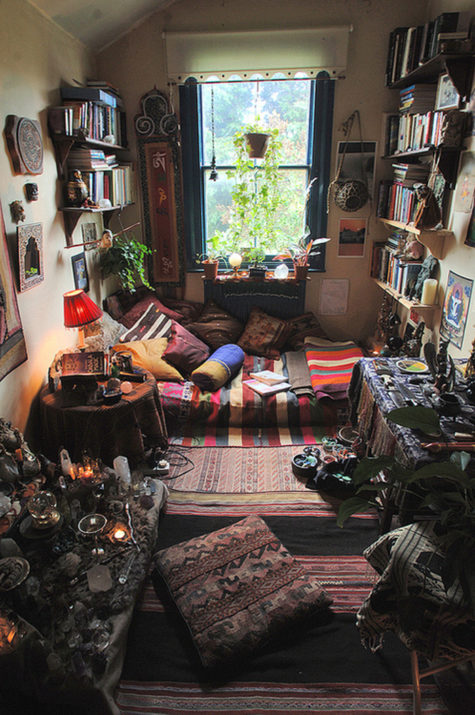



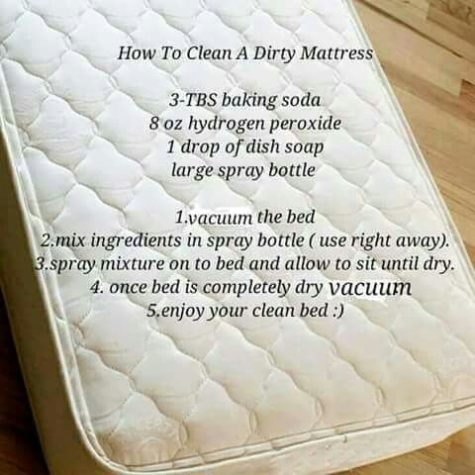

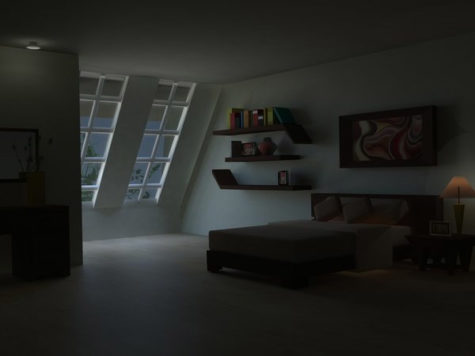
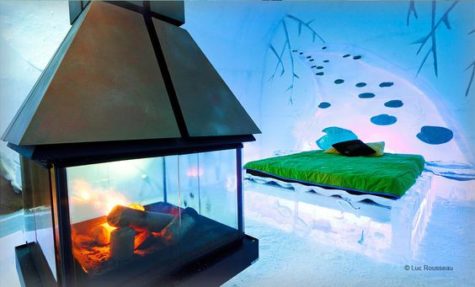
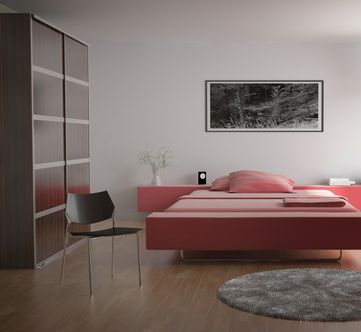






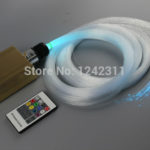








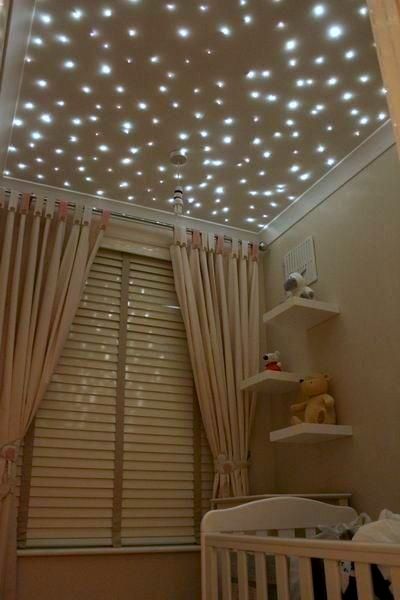








Leave a Reply